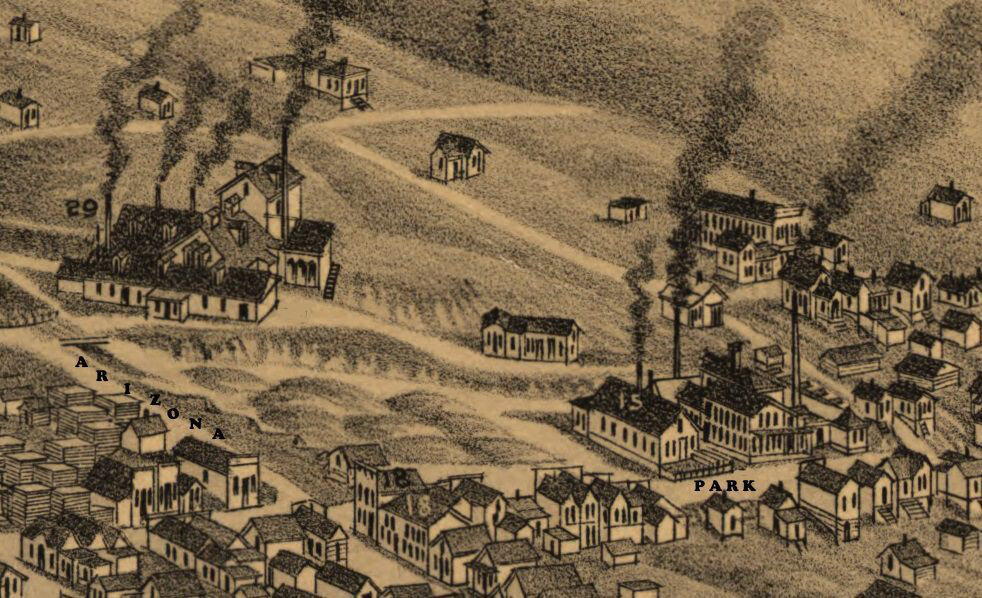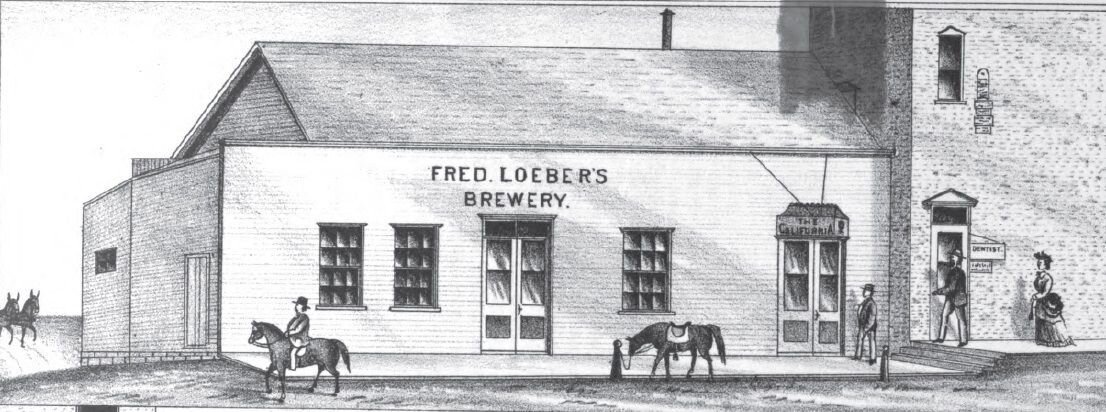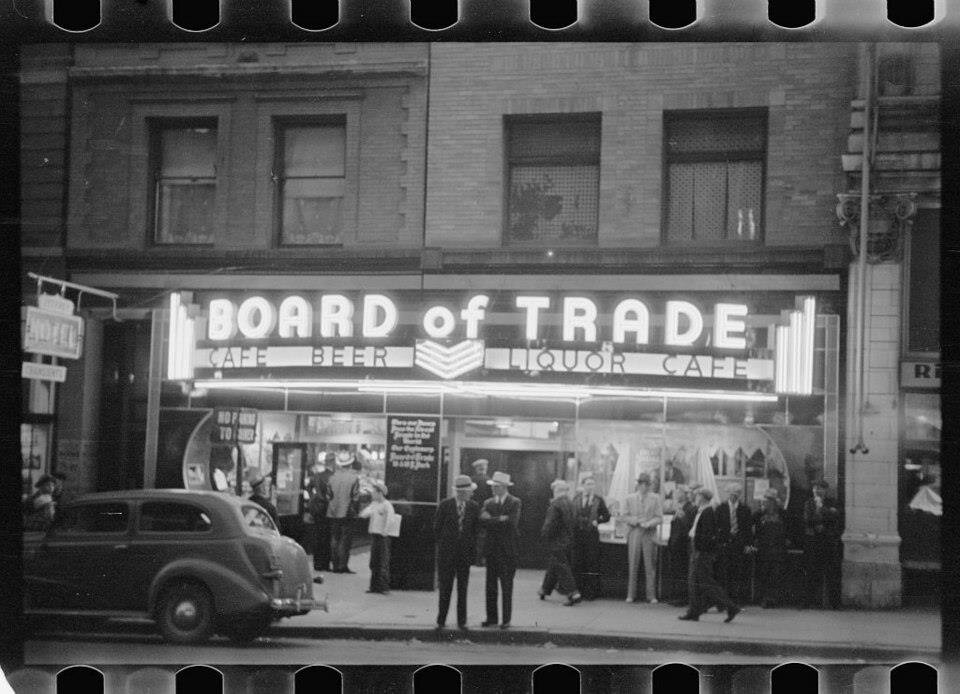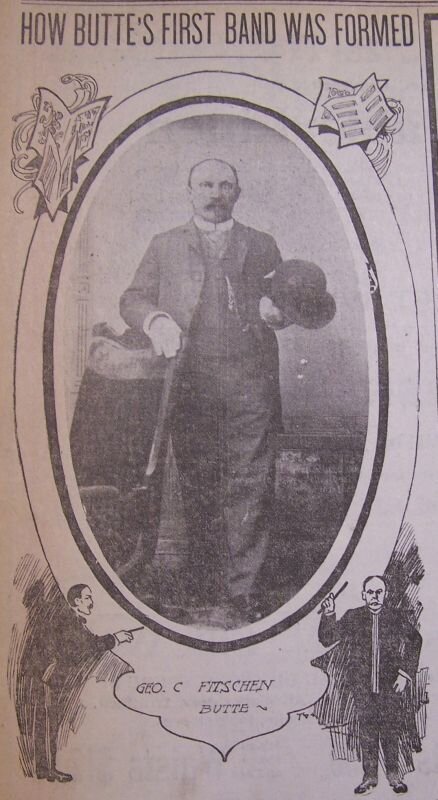
Butte, America’s Story Episode 120 - Boston & Montana Band
Butte had musicians and bands almost from day one, and Butte’s first organized band celebrated the nation’s centennial in 1876. But the longest-lived band began in Meaderville on December 22, 1887.

Butte, America’s Story Episode 119 - Tuttle Foundry
As Butte evolved from a transitory mining camp to a permanent metropolis, strong building materials were in greater and greater demand. Bricks, obviously, but also iron. Cast-iron columns to help support the multi-story business blocks became common.

Butte, America’s Story Episode 118 - Ice
While it’s likely that there was at least casual harvesting and storage of ice from lakes around town for use during the summer in Butte’s earliest days, it seems that Butte’s first commercial dealer in ice was W.H. Patterson.

Butte, America’s Story Episode 117 - The Lexington Mine
The Lexington is among the older claims in Butte, staked in 1865 by partners Heffner and McCann. But little happened at the site on the edge of Walkerville until the middle 1870s, when Butte’s silver rejuvenation began.

Butte, America’s Story Episode 116 - The Electric Building
NorthWestern Energy’s former headquarters at 40 East Broadway began its life in 1911 as the Electric Building, home of the Butte Electric & Power Company. A spectacular structure made of white reinforced concrete with a terra cotta facade, it sported six candelabra-like lights along its roof line, together with an electric flag.

Butte, America’s Story Episode 115 - Butte in 1878
What was Butte like in, say, 1878? We were three years into the silver boom, but things hadn’t really taken off. The United States was still suffering from the effects of the Panic of 1873, a financial crisis and depression caused in part by post-Civil War inflation, unwarranted speculation in the markets, depressed silver prices, and bank losses due to major fires in Chicago and Boston.

Butte, America’s Story Episode 114 - Board of Trade
A saloon occupied the southeast corner of Park and Main, its angled door facing the intersection, from before 1884 until 1916, when the multitude of buildings around that corner were torn down to make way for the Rialto Theater.

Butte, America’s Story Episode 113 - Reno Sales
Reno Sales has been called the “Father of Mining Geology,” with some justification. David Brunton (who invented the pocket transit, or Brunton compass known to most geologists) hired Horace V. Winchell to work with him in Butte beginning in 1898.

Butte, America’s Story Episode 112 - Alma Higgins
Nicholas Bielenberg’s daughter, Alma Bielenberg Higgins, became prominent in Butte garden circles, but she got her start in Deer Lodge. At her request Nick acquired the mortgage on the Deer Lodge Women’s League Chapter House, donating it to the organization.

Butte, America’s Story Episode 111 - Cricket
In 1902, Butte boasted two cricket clubs. Not associations of entomologists, but organizations devoted to the English national sport. The Centerville Cricket Club was established in 1898, and soon became state champions.

Butte, America’s Story Episode 110 - Mary Fifer
The Independent Order of Odd Fellows (IOOF) has its roots in England and Scotland as long ago as the 1500s. The name’s origin is obscure, but most histories indicate that it came from their practice of admitting working-class members – making the organization “odd,” compared to most such groups that focused on the elite.

Butte, America’s Story Episode 109 - Butte’s First Band
The first organized band in Butte debuted on July 4, 1876, for the U.S. centennial. There were neither 76 trombones, nor 110 cornets, but the five musicians included Band Leader George Fitschen on B flat cornet, Simon Hausworth on E flat alto, Charles Basuman on bass, John Hausworth on alto, and Peter Sherrer on bass drum.

Butte, America’s Story Episode 108 - Smoke Wars
It was said in 1890 that Butte contained just four living trees—thanks to the need for timber in mine tunnels, wood to construct houses, fuel for smelters, and death of trees by toxic fumes.

Butte, America’s Story Episode 107 - Garden Spot
In the 1890s and early 1900s, Butte was notorious for the smoke and fumes emanating from its mills and smelters. It was said – and likely true, at least on occasion – that on a clear day the smoke was sometimes so bad you needed a lantern to see the street signs.

Butte, America’s Story Episode 106 - Velie Motors
If you needed a new car in 1919, Velie Motors of Butte, at 404 S. Arizona, had what you wanted, if you could afford it. The Velie Carriage Company of Moline, Illinois, was established in 1902 by Willard Velie, grandson of John Deere.

Butte, America’s Story Episode 105 - Better English
In November 1919 students from Butte High took to the streets. It wasn’t Homecoming, it wasn’t a protest march, it wasn’t even the first anniversary of Armistice Day yet. It was a parade – actually two parades – marking the successful end to Better English Week.

Butte, America’s Story Episode 104 - Sewell’s
By 1911 Walter had started a Butte hardware business that would last for 60 years. His one-story store at 221 East Park Street was built in 1916 at a cost of $5,000. By 1919, the business included paints and auto accessories, and from the fact that Sewell’s advertised regularly in the Butte Daily Bulletin – the radical labor newspaper.

Butte, America’s Story Episode 103 - Episcopal Church
Ash Wednesday, 1919, was a tragic and ironic day for St. John’s Episcopal Church, when fire reduced much of its interior to ashes. St. John’s is the oldest church standing in Butte, predating the current St. Patrick’s by about a year.

Butte, America’s Story Episode 102 - President Taft Visits
President William Howard Taft visited Butte twice during his single term as President, in September 1909 and October 1911. Neither of Taft’s western tours were campaign trips, but were mostly to drum up support for various policies ranging from tariff protection to arbitration treaties with England and France.

Butte, America’s Story Episode 101 - The Chinn Family
When Chin Yee Fong came to Butte in 1905 to join his father at the Wah Chong Tai Company, he was about 16 years old. He attended Garfield School and by 1910 he was the assistant bookkeeper of the most prestigious Chinese business in Butte.